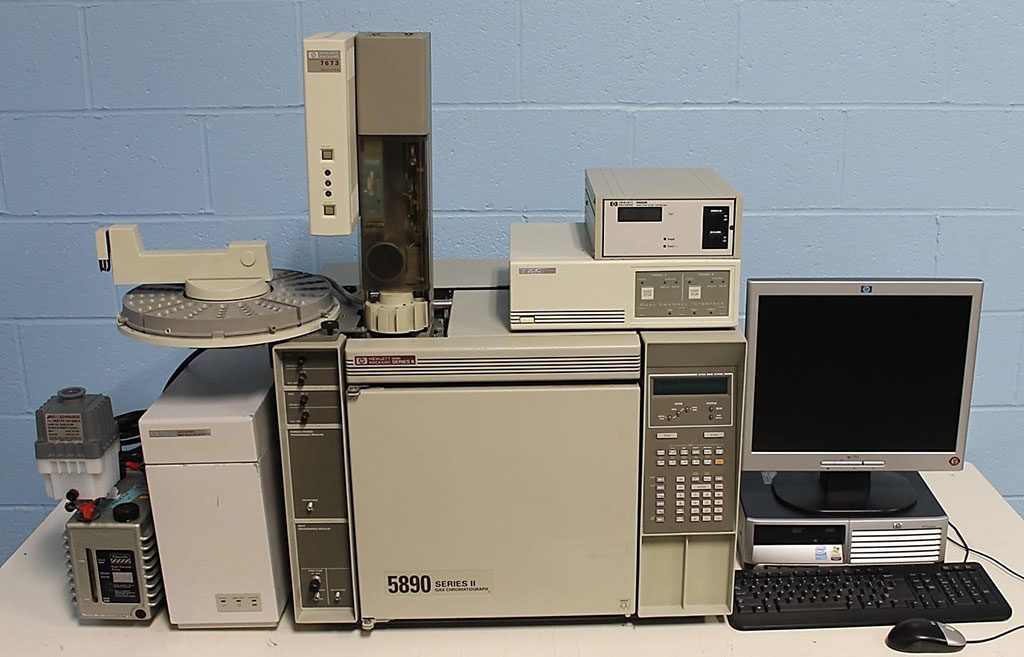Fatty Acids Profiles Related to Biomarkers in GDM Progression
By LabMedica International staff writers
Posted on 25 Nov 2021
Gestational diabetes mellitus (GDM) is a condition in which a hormone made by the placenta prevents the body from using insulin effectively. Glucose builds up in the blood instead of being absorbed by the cells.Posted on 25 Nov 2021
Fatty acids (FAs) are mainly composed of plasma phospholipids, cholesterol esters, triglycerides, and erythrocyte total phospholipids, all of which have been implicated in the pathogenesis of cardiometabolic disorders via their associations with insulin resistance, β-cell dysfunction, inflammation, glucose transporter inhibition, and lipotoxicity.

Image: The Hewlett Packard HP 5890 Series II Plus Gas Chromatograph (GC) System (Photo courtesy of American Laboratory Trading)
A team of medical scientists led by those at the Eunice Kennedy Shriver National Institute of Child Health and Human Development (Bethesda, MD, USA) recruited from a large cohort of 2,802 pregnant women, 85 GDM cases using the Carpenter and Coustan criteria and 85 non-GDM controls after exclusion. Upon enrollment at 8 to 13 weeks gestational age (GA) (visit 0), women were scheduled to attend five follow-up visits with blood collection at targeted weeks of GA.
The team examined three subclasses of plasma phospholipid FAs, including plasma phospholipid saturated FA (SFAs), polyunsaturated FA (PUFAs), and monounsaturated FAs (MUFAs) via the Hewlett Packard 5890 gas chromatography system (Palo Alto, CA, USA). The content of individual SFAs, PUFAs, and MUFAs was expressed as weight percentage of the total plasma phospholipid FAs. They assayed all case-control matched samples in a random order in the same analytic run and then performed 40 repeats in each batch among the in-house pooled control samples from the same cohort to assess the interassay CV.
The investigators reported that eight FAs showed significant fold changes from the baseline values (23–31 weeks) among GDM cases as compared to women without GDM. Five FAs showed reduced fold changes: myristic acid (14:0), palmitic acid (16:0), cis-palmitoleic acid (16:1n7), alpha-linolenic acid (18:3n3), and dihomo-gamma-linoleic acid (20:3n6), whereas three showed increases: heptadecanoic acid (17:0), cis-vaccenic acid (18:1n7), and arachidonic acid (20:4n6).
The authors concluded that they had identified eight plasma phospholipid FAs [SFAs: myristic acid (14:0), palmitic acid (16:0), and heptadecanoic acid (17:0); PUFAs: ALA (18:3n3), DGLA (20:3n6), and AA (20:4n6); MUFAs: palmitoleic acid (16:1n7) and vaccenic acid (18:1n7)] with unique patterns of change before and after GDM diagnosis. Such changes of FAs differed significantly between women with and without GDM during the same time window in pregnancy. The study was published on October 11, 2021 in the journal Clinical Chemistry.
Related Links:
National Institute of Child Health and Human Development
Hewlett Packard














